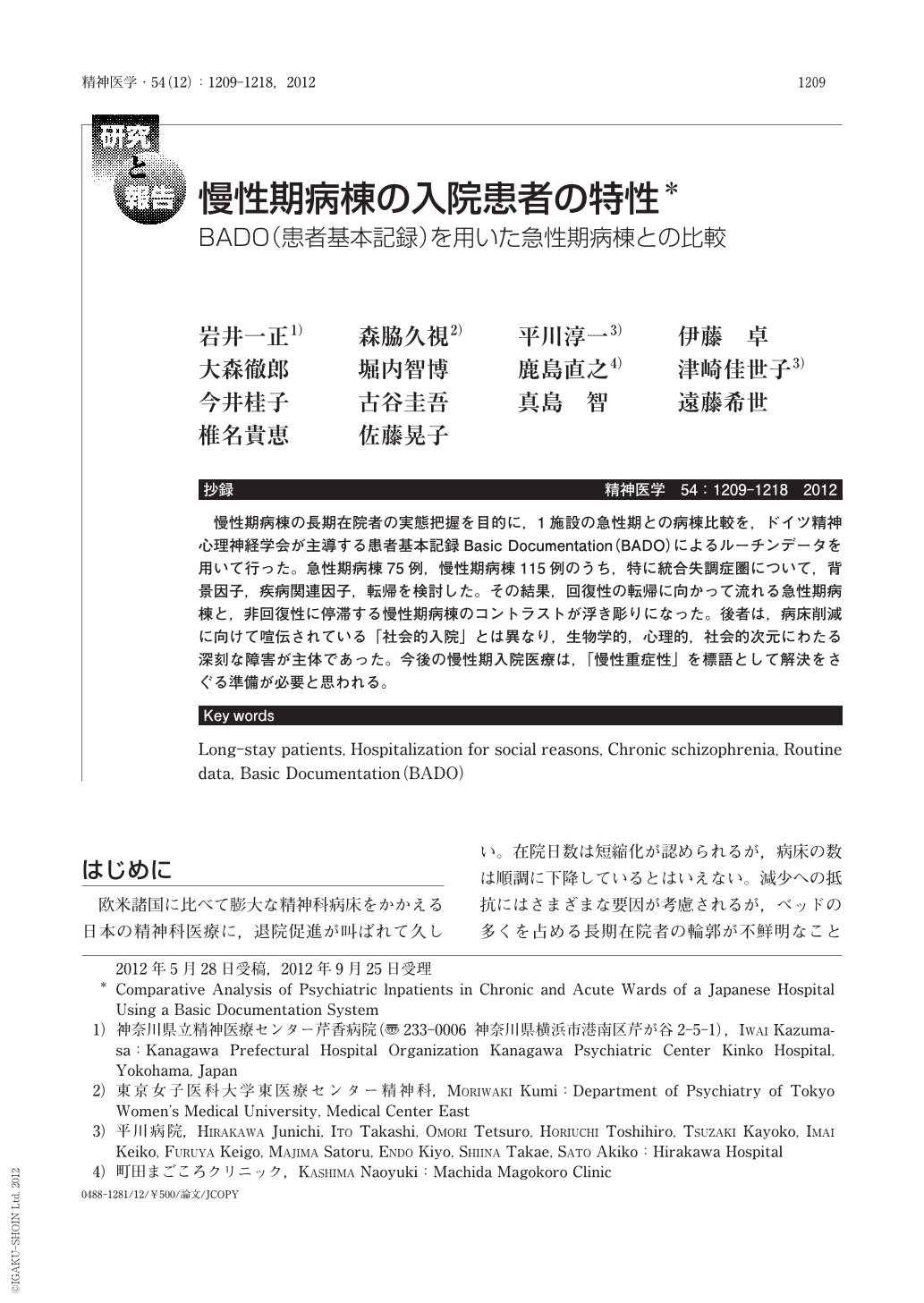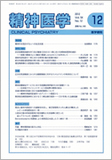Japanese
English
- 有料閲覧
- Abstract 文献概要
- 1ページ目 Look Inside
- 参考文献 Reference
抄録
慢性期病棟の長期在院者の実態把握を目的に,1施設の急性期との病棟比較を,ドイツ精神心理神経学会が主導する患者基本記録Basic Documentation(BADO)によるルーチンデータを用いて行った。急性期病棟75例,慢性期病棟115例のうち,特に統合失調症圏について,背景因子,疾病関連因子,転帰を検討した。その結果,回復性の転帰に向かって流れる急性期病棟と,非回復性に停滞する慢性期病棟のコントラストが浮き彫りになった。後者は,病床削減に向けて喧伝されている「社会的入院」とは異なり,生物学的,心理的,社会的次元にわたる深刻な障害が主体であった。今後の慢性期入院医療は,「慢性重症性」を標語として解決をさぐる準備が必要と思われる。
The long-duration of hospitalization in Japanese psychiatric hospitals is mainly attributed to insufficient social support and community-based programs. Despite the attempts to establish these services, long-duration hospitalization remains a major issue. In this study, we aimed to compare the actual conditions of patients in the chronic wards (CWs) and acute wards (AWs).
In 2008, data for a 3-month period were collected from a private psychiatric hospital in a suburb of Tokyo, using a psychiatric basic documentation system (DGPPN-BADO). Sociodemographic factors, treatment processes, and outcomes of a sample comprising of 115 CW patients and 75 AW patients were analyzed, especially with regard to schizophrenia and related disorders. Schizophrenia and related disorders accounted for 78.3% (n=90) and 54.7% (n=41) of the cases in the CW and AW, respectively. Compared to AW patients, CW patients were significantly older, more likely to be single, less educated more frequently rehospitalized, and more physically impaired. Scores for Global Assessment of Functioning (GAF), which is measurement of psychosocial functioning, and Clinical Global Impressions (CGI), which is measurement of severity of illness were almost equal for the CW patients at the time of this study and the AW patients at the time of admission. CW patients received polypharmacy and higher chlorpromazine-equivalent doses significantly more often than AW patients did. The CW patients had been in the ward for an average of 9.2 years up to the index period, and only 13.3% of the patients were discharged after 1 year. In contrast, most AW patients (90.2%) were discharged after an average of 90.3 days with more improvement in GAF and CGI scores.

Copyright © 2012, Igaku-Shoin Ltd. All rights reserved.


